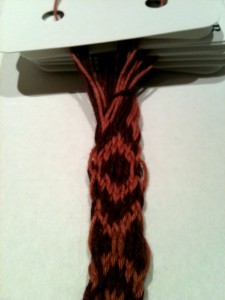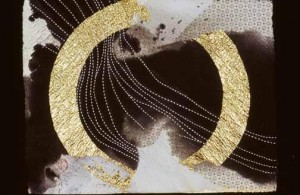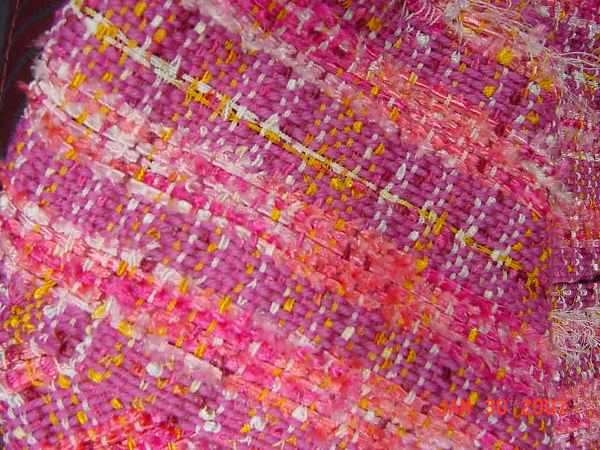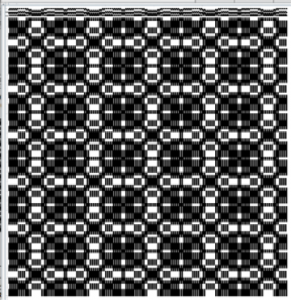Who is weaving what?
(exchange yarn added Sep. 10th)
U. D. – Wandering Vine (aka Snail Trail, Cats Paw); Yarn: Teal, wool
R. T. – Primrose Diamonds; Yarn: Cinnamon, Cascade Heritage 150
K. D. – Johann Schleelein’s No. 125; Yarn: Blue/Purple
T. G. – Charity Beck; Yarn: Teal
C. V. – Sun, Moon and Stars
C. S. – Finnish Diamond: Yarn: Light Blue, cotton
A. M. – Bertha Gray #84; Yarn: Teal, handspun wool (single)
L. C. – Whig Rose; Yarn: Jade Green, wool
B. P. – Blooming Leaf; Yarn: Natural, handspun wool
J. P. – Star of Bethlehem; Yarn: Olive Green, wool
K. L. – ?; Yarn: Red
We have 11 weavers. This means that for a 12 square coverlet, one square will need to be repeated. For a 3 square by 4 square coverlet, the weaver would end up weaving 3 squares in her own weft: one for the guild quilt and two for her own coverlet.
What are the warp details?
8/2 cotton, unmercerized Valley Cotton from WEBS (yarn.com) in natural
288 total ends
18 e.p.i.
16″ total sleyed width
18″ of warp allowed per square
36″ loom waste allowance
So a warp for 13 squares (12 for a 3×4 coverlet plus one for the guild) would be 7.5 yards long.
What are the weft details?
The tabby weft (the plain weave weft picks between each pattern weft pick) is the same 8/2 cotton as the warp.
Weft yarn choice is up to the weaver. Each pattern weft pick needs to be fat enough to spread out and cover the tabby wefts on either side. But it also needs to be squishy enough to fit in the spaces between the tabby picks and still allow the tabby weft to be packed square with the warp, at 18 per inch. So an ideal weft would be something that can cover an inch with 18 wraps but then squish down to about half an inch. This works out to something between fingering and sport weight, I believe, depending on how hard the yarn is. The variation between the different chosen wefts provides a lot of the educational aspect of this project.
144-150 yards of pattern weft per square. For each square, the number of weft picks should equal the number of warp ends, which is 288. For ease in calculation, allow a generous 18″ (1/2 yard) per pick, which results in 144 yards each of tabby weft and pattern weft per square. Rounding up to 150 yards allows a comfortable margin.
For a 13 squares, this adds up to at total of about 1,950 yards of pattern weft.
 How braids are made is never a mystery to those who make them, but to many of us they are mysterious and I for one would love to know the answers. Braids to me are the most fascinating of all textile structures and they been an absorbing interest for the past 40 years. It is this never ending journey I wish share with you as we look at braids from Europe, Asia, Japan and South America.
How braids are made is never a mystery to those who make them, but to many of us they are mysterious and I for one would love to know the answers. Braids to me are the most fascinating of all textile structures and they been an absorbing interest for the past 40 years. It is this never ending journey I wish share with you as we look at braids from Europe, Asia, Japan and South America.


